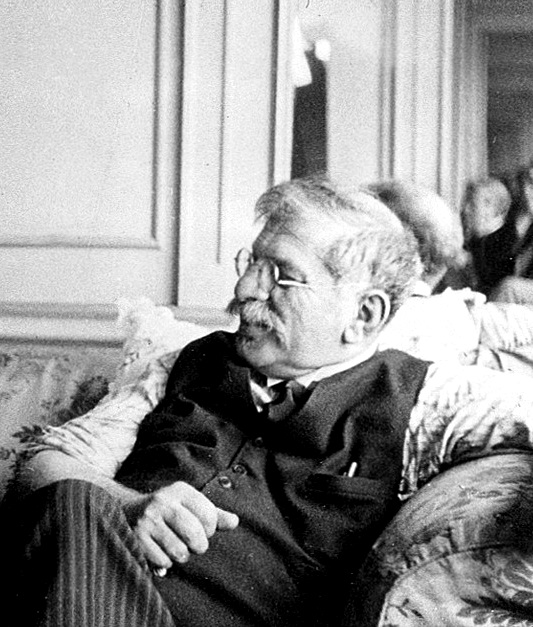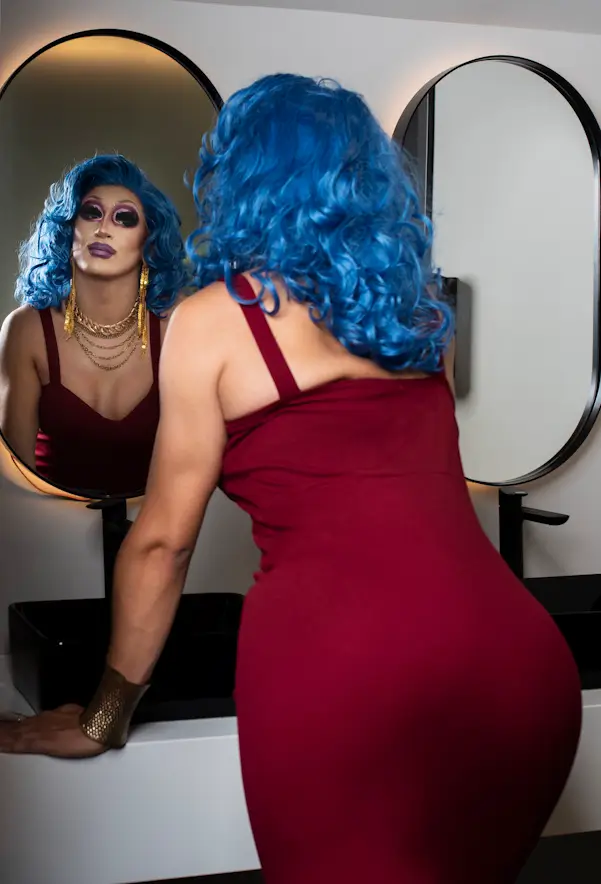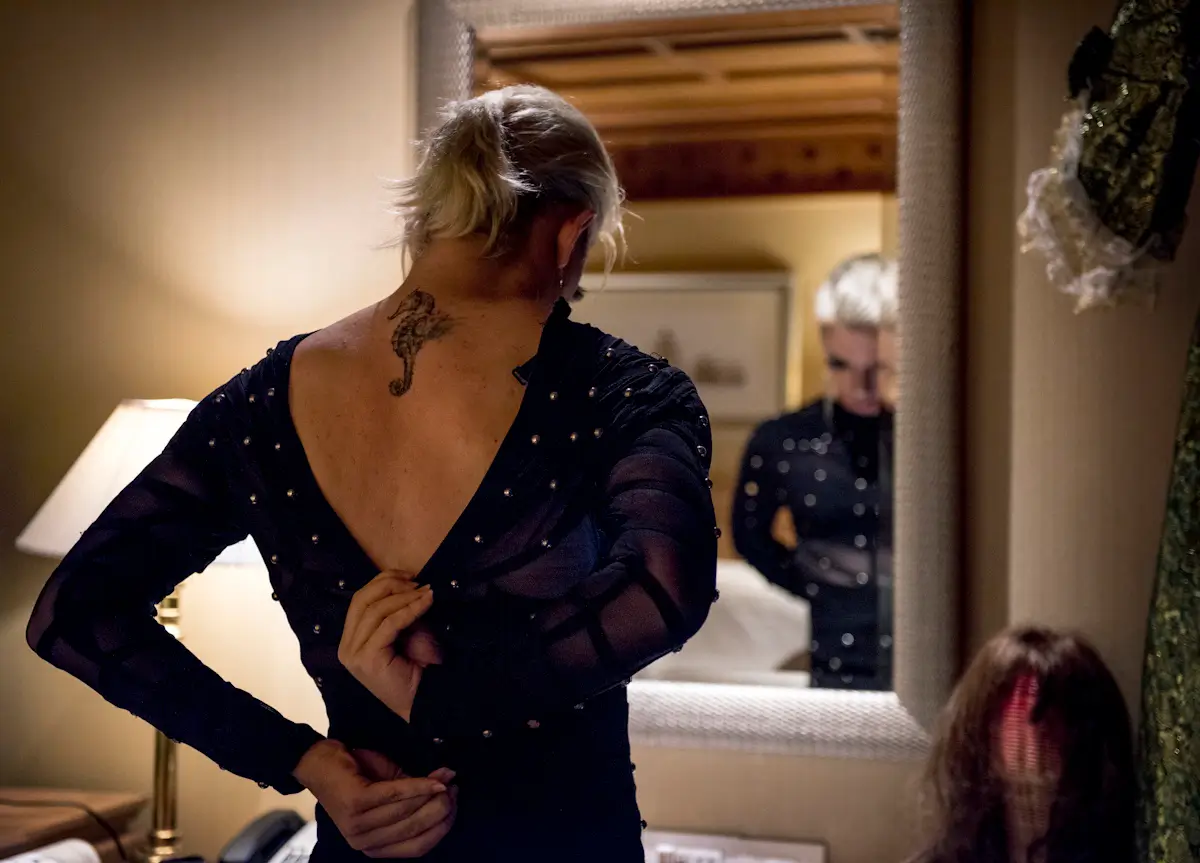Have you ever wondered how clothing can communicate identity beyond mere fashion? Understanding the term “transvestite” means exploring how individuals express their gender through clothing traditionally associated with another gender. You might think this relates directly to sexual orientation or identity, but the truth is more nuanced and complex. To truly grasp this fascinating aspect of human expression, it’s essential to confront common misconceptions and stereotypes. Let’s unpack these ideas together.
What is a Transvestite?
When you hear the term “transvestite,” you might think it’s simply about wearing clothes typically associated with another gender, but it involves deeper aspects of self-expression, comfort, and performance.
It’s important to recognize that transvestism doesn’t necessarily indicate someone’s gender identity or sexual orientation.
Understanding the distinction between transvestites and transgender individuals can help you appreciate the diversity within gender expression and identity.
Transvestite Definition and Characteristics
The term “transvestite” refers to someone who wears clothing typically associated with a gender different from the one society assigns them, primarily for self-expression, comfort, or performance.
As a transvestite, your choice of attire represents a meaningful form of gender expression, but doesn’t necessarily reflect your sexual orientation or gender identity. The word itself comes from Latin: “trans,” meaning “across,” and “vestire,” meaning “to dress,” emphasizing the practice of dressing across traditional gender lines.
Historically, societies worldwide have embraced cross-dressing in various cultural contexts, from ancient theatrical performances to modern drag communities.
Through this expression, you may explore and embody diverse gender characteristics, positively influencing your mental health, self-awareness, and overall well-being, while fostering broader societal acceptance and understanding.
What Does Transvestism Entail?
Although people often associate transvestism solely with cross-dressing, it actually encompasses a broader range of personal expression and identity exploration. Transvestism involves intentionally wearing clothing typically associated with another gender, enabling you to explore different facets of your identity, express yourself authentically, and engage meaningfully with gender expression.
Transvestism supports your personal journey in several ways:
- Identity Exploration: Encourages deep self-exploration and understanding of your identity.
- Expressive Freedom: Allows authentic expression beyond traditional gender norms.
- Cultural Significance: Connects you to historical traditions of diverse gender expression across cultures.
- Affirmation of Fluidity: Validates your experience of gender fluidity, promoting psychological well-being.
Ultimately, transvestism is a meaningful practice that fosters acceptance, belonging, and personal authenticity.
Distinction Between Transvestites and Transgender Individuals
Because the terms “transvestite” and “transgender” are frequently misunderstood or used interchangeably, it’s important to clarify how they differ to respect individual experiences better.
A transvestite is someone who wears clothing typically associated with another gender, primarily as a form of gender expression, self-expression, comfort, or performance. This doesn’t inherently reflect their gender identity—how they internally perceive themselves—or sexual orientation.
In contrast, if you’re transgender, your gender identity differs from the sex assigned to you at birth, and you may seek to alter socially, medically, or both.
Recognizing this distinction helps you understand that transvestism relates mainly to outward appearance and clothing choices, whereas being transgender involves an internal sense of self.
Appreciating these nuances fosters deeper empathy and inclusion.
What is the Origin of the Term Transvestite?
When you hear the term “transvestite,” you might wonder about its historical roots and how it emerged in our language.
Originally coined by German psychiatrist Magnus Hirschfeld in the early 20th century, the term combines the Latin words “trans” (across) and “vestire” (to dress), describing individuals who wear clothing typically associated with another gender.
Over the decades, its usage has evolved considerably, reflecting broader societal changes and increasing awareness about gender expression.
Historical Background of the Word
If you explore the etymology of the term “transvestite,” you’ll find it stems directly from Latin, combining “trans,” meaning “across,” and “vestire,” meaning “to dress.
Originally coined to describe individuals who dress in clothing typically associated with the opposite sex, the term has historical roots extending far beyond contemporary usage.
Throughout history, transvestitism has held significant cultural meanings, from theatrical performances in Ancient Rome and Medieval Europe to practical cross-dressing for survival, as exemplified by Joan of Arc.
This broad historical significance emphasizes how gender expression through clothing has often transcended personal identity, reflecting societal roles and expectations.
Consider these historical insights:
- Ancient Roman theater prominently featured cross-dressing.
- Shakespearean actors commonly portrayed women.
- Kabuki performances integrated cross-dressing traditions.
- Cross-dressing historically aided survival and escape.
Magnus Hirschfeld’s Contributions to Transvestism
While “transvestite” has deep historical roots, it was German physician and sexologist Magnus Hirschfeld who first coined the term in 1910, combining the Latin words “trans” (across) and “vestire” (to dress).
Hirschfeld’s groundbreaking research notably advanced the understanding of gender expression, highlighting cross-dressing as a genuine form of self-expression rather than a psychological disorder. By recognizing diverse forms of gender identity, he championed transgender visibility and rights at a time when such acceptance was rare.
Hirschfeld founded the Scientific-Humanitarian Committee in 1897, advocating against discriminatory laws targeting homosexual and transgender individuals. His compassionate, evidence-based approach paved the way for greater acceptance and inclusion, shaping contemporary perspectives on gender diversity and reinforcing your right to express your authentic self.

20th Century Usage and Evolution
Although the term “transvestite” originated from Latin roots combining “trans,” meaning “across,” and “vestire,” meaning “to dress,” its widespread use didn’t emerge until the early 20th century.
Initially, medical and psychological communities used it to describe cross-dressing behaviors without fully recognizing the complexity of gender expression. Over time, its meaning shifted toward broader, more inclusive understandings.
Considering this historical context helps you grasp how perceptions have evolved:
- Early 20th-century usage often medicalized transvestism.
- Historically, cross-dressing served various cultural purposes beyond gender identity.
- Modern discussions favor “cross-dressing” for greater neutrality and inclusivity.
- Today, transvestism is acknowledged as an independent form of gender expression, separate from sexual orientation or gender identity, promoting wider acceptance and belonging.
How Do Transvestites Express Their Gender?
When you consider how transvestites express their gender, clothing often serves as a powerful medium to reflect personal identity and challenge traditional norms.
Cross-dressing can offer individuals a meaningful way to explore and communicate their gender fluidity and inner experiences.
Additionally, the cultural influence of drag queens highlights how gender expression through performance can foster broader acceptance and understanding within society.
The Role of Clothing in Gender Expression
If you look beyond mere fabric or style, clothing becomes a powerful medium through which transvestites express and explore their gender identity. Through clothing, you can understand how gender expression is shaped and communicated, as it allows individuals practicing transvestism to embody aspects beyond traditional binary norms.
By intentionally selecting garments typically associated with another gender, you actively engage in conversations around gender fluidity and challenge societal expectations.
Clothing’s role in gender expression includes:
- Facilitating personal comfort and authenticity.
- Allowing exploration and integration of diverse gender characteristics.
- Encouraging dialogue about gender norms and expectations.
- Reflecting cultural contexts and influencing societal perceptions.
Ultimately, clothing offers transvestites a meaningful way to connect authentically with themselves and others.
Cross-Dressing: A Form of Self-Expression
Because cross-dressing serves as a powerful form of self-expression, it enables transvestites to explore and communicate their gender identity beyond societal boundaries authentically.
When you engage in cross-dressing, you actively challenge traditional norms by expressing aspects of your identity that may not align with rigid expectations. Your motivations can be diverse, ranging from personal comfort and performance art to embracing a more fluid gender expression.
Historically, cross-dressing has held cultural significance, reinforcing its value beyond mere clothing choices. By openly embracing this practice, you foster greater acceptance and understanding within your community, enhancing both your mental health and overall well-being.
Ultimately, cross-dressing empowers you to confidently embody and celebrate your true self, promoting inclusivity and belonging for everyone.
Drag Queens and Their Cultural Impact
Have you ever considered how drag queens creatively express and challenge ideas about gender? Through vibrant costumes, makeup artistry, and enchanting performances, drag queens showcase diverse forms of gender expression.
Their cultural impact extends beyond entertainment, actively breaking down traditional gender norms and promoting visibility and acceptance of gender fluidity.
Consider how drag queens foster belonging and awareness:
- Artistic Expression: Celebrating creativity and individuality through performance art.
- Advocacy: Using platforms to champion LGBTQ+ rights and address social issues.
- Educational Outreach: Initiatives like Drag Queen Story Hour teach inclusivity and counter stereotypes.
- Media Visibility: Shows such as “RuPaul’s Drag Race” amplify drag culture, broadening understanding and acceptance within mainstream society.
Ultimately, drag queens powerfully advocate for authenticity, equality, and community inclusion.
Are There Any Misconceptions About Transvestites?
You may have encountered stereotypes portraying transvestites inaccurately or simplistically, leading to misunderstandings about their identities and motivations.
It’s important to recognize that transvestism doesn’t define someone’s sexual orientation, and assuming otherwise can reinforce harmful misconceptions.
Additionally, becoming aware of offensive terminology and its negative impact helps foster a more respectful and inclusive understanding of diverse gender expressions.
Common Stereotypes Surrounding Transvestism
Although society has gradually become more open-minded toward diverse gender expressions, numerous stereotypes still surround transvestism and hinder accurate understanding. Recognizing these misconceptions helps you foster empathy, inclusion, and genuine connection.
- Confusing cross-dressing with gender identity: Cross-dressing doesn’t mean transgender people always desire to change their gender. Gender expression can differ from gender identity.
- Assuming mental instability: Enjoying clothing typically associated with another gender isn’t indicative of confusion or illness; it’s a valid form of self-expression.
- Believing it’s a modern trend: Historical evidence shows cross-dressing has existed across diverse cultures for centuries.
- Negative media portrayals: Media often reinforces harmful stereotypes, trivializing or ridiculing transvestites rather than respecting their authentic experiences and identities.
Transvestite vs. Sexual Orientation Misunderstandings
Misunderstandings about transvestism go beyond stereotypes, often extending into confusion about sexual orientation. You might incorrectly think cross-dressing automatically indicates sexual orientation or transgender identity. However, gender expression through clothing doesn’t define who someone is attracted to or their gender identity. Transvestites can be heterosexual, homosexual, bisexual, or identify anywhere along the spectrum.
| Common Misconception | Reality |
|---|---|
| Transvestites are transgender. | Gender expression doesn’t necessarily match gender identity. |
| Cross-dressing defines sexual orientation | Sexual orientation varies independently from clothing choices. |
| It’s purely a sexual fetish. | Often centers around identity exploration and self-expression. |
| Transvestites want to change genders. | Many have no desire to alter their gender identity. |
Understanding these misconceptions helps you foster acceptance and belonging for individuals expressing their authentic selves.
Addressing Offensive Terminology and Its Impact
When discussing gender expression, it’s important to recognize that language matters—the term “transvestite,” although historically used, is now often seen as outdated and potentially offensive.
Using outdated terms can unintentionally reinforce harmful misconceptions about transgender people and others whose gender identity is different from societal expectations. Misunderstandings around gender issues can negatively impact individuals, leading to isolation, prejudice, or discrimination.
Prioritizing education and awareness helps create inclusive, respectful spaces where everyone feels understood and valued.
Consider these points to deepen your understanding:
- Language evolves—stay informed about respectful terminology.
- Cross-dressing doesn’t define sexual orientation or gender identity.
- Misconceptions lead to discrimination; awareness combats stigma.
- Inclusive language fosters belonging and acceptance in diverse communities.
What is the Relationship Between Transvestism and Sexual Pleasure?
When exploring the connection between transvestism and sexual pleasure, you may notice that for some individuals, cross-dressing carries fetishistic elements, heightening sexual arousal and intimacy.
It’s important to recognize, however, that sexual orientation among transvestites varies considerably, and cross-dressing doesn’t inherently indicate a particular sexual identity.
Understanding the diverse roles cross-dressing can play in shaping one’s sexual identity helps foster a more inclusive perspective on this complex relationship.
Understanding Fetishistic Elements of Transvestism
Have you ever wondered why cross-dressing can sometimes hold sexual significance for certain individuals? For some, fetishistic elements emerge when cross-dressing intertwines with sexual pleasure, creating a deeper connection to their gender expression. However, this experience varies greatly:
- Thrill of Breaking Norms: The excitement of defying societal expectations can heighten arousal.
- Empowerment and Affirmation: Dressing in opposite-gender clothing may reinforce feelings of strength and personal identity, amplifying sexual enjoyment.
- Exploration of Gender Fluidity: Experiencing fluid gender roles through clothing can enhance intimate self-discovery.
- Individual Variation: Many cross-dress purely for comfort, identity exploration, or artistic expression—without sexual intent.
Recognizing these diverse experiences fosters greater inclusivity and helps you better understand the unique journeys behind each person’s expression.
Transvestites and Their Sexual Orientation
Although transvestism involves dressing in clothing culturally associated with another gender, it’s important to understand that this practice doesn’t inherently determine someone’s sexual orientation or imply sexual pleasure.

Your experience with transvestism might be entirely separate from sexuality, focusing primarily on comfort, gender identity, or self-expression. Individuals who practice transvestism have diverse sexual orientations—heterosexual, homosexual, bisexual, or otherwise—which aren’t defined by their clothing choices.
While some people may experience sexual arousal from cross-dressing, others do not; this varies greatly among individuals. Recognizing this complexity helps foster understanding and acceptance, showing that dressing in ways that affirm your gender identity or personal expression doesn’t automatically connect to sexual feelings or preferences, but rather highlights the nuanced motivations behind transvestism as a whole.
Role of Cross-Dressing in Sexual Identity
Your experience with cross-dressing may intersect with sexuality in varying degrees, depending on your individual perspective and motivations.
For some, cross-dressing can heighten sexual pleasure or arousal, providing empowerment, confidence, or excitement. Others see it solely as an exploration of gender expression, unrelated to sexual orientation or desire.
This diversity highlights the complexity of human sexuality and gender identity—cross-dressing doesn’t determine who you’re attracted to; instead, it offers another lens to understand yourself.
Consider these insights:
- Cross-dressing may enhance intimacy through fantasy or role-play.
- Sexual arousal isn’t universal; motivations differ widely.
- Transgender people also may cross-dress to affirm gender identity.
- Exploring gender expression through cross-dressing fosters self-acceptance and belonging, enriching your sexual and personal identity.
How Can Individuals Support Transvestites and Their Community?
You can actively support transvestites and their community by advocating for inclusive spaces that celebrate diverse gender expressions.
Educating yourself and others about transvestism helps dismantle misconceptions and promotes genuine understanding and acceptance.
Additionally, connecting with LGBTQ+ resources and organizations provides essential support, visibility, and empowerment for individuals expressing their authentic selves.
Creating Inclusive Spaces for Gender Expression
When individuals actively advocate for inclusive environments, they help create safe spaces where transvestites can freely express their gender identity without fear of judgment or discrimination.
You can contribute meaningfully by consciously using respectful language and affirming diverse gender expressions. By normalizing conversations about gender expression, you help dismantle harmful stereotypes and foster genuine acceptance.
Providing resources, such as advocacy groups and mental health support, further empowers transvestites to navigate societal challenges. Celebrating transvestite culture through events and creative expression also enhances visibility and encourages appreciation of diverse identities.
Here are four practical ways you can nurture inclusivity:
- Use respectful language that acknowledges chosen identities.
- Promote open dialogue on diverse gender expressions.
- Support local advocacy groups.
- Participate in cultural events celebrating gender diversity.
Importance of Education and Awareness
Because education and awareness directly challenge misconceptions about transvestitism, they play an essential role in fostering acceptance for diverse gender expressions. By actively pursuing education, you enhance your understanding of transgender people and recognize the rich history and cultural significance behind gender expression. Awareness helps dismantle stereotypes and creates an inclusive environment where individuals feel seen and respected.
Here’s how you can contribute:
| Action | Impact | Example |
|---|---|---|
| Educate yourself | Reduces misconceptions | Attend workshops or read articles |
| Amplify voices | Normalizes diverse experiences | Share stories on social media |
| Advocate for rights | Guarantees legal protection | Support inclusive policies |
| Encourage dialogue | Promotes empathy and acceptance | Initiate respectful conversations |
| Challenge stereotypes | Fosters inclusive attitudes | Correct misinformation gently |
Resources for the LGBTQ+ Community
Building upon education and awareness, actively supporting transvestites and the broader LGBTQ+ community involves accessing and utilizing available resources effectively.
Familiarizing yourself with resources for the LGBTQ+ community strengthens your ability to promote equality and acceptance for diverse gender identities. You can:
- Join local support groups to create safe spaces for individuals exploring gender identity, providing solidarity and fostering belonging.
- Attend pride events and patronize LGBTQ+ businesses, increasing visibility and supporting economic empowerment.
- Advocate for legislation protecting transgender and gender-nonconforming individuals, ensuring their rights and fighting discrimination.
- Engage in respectful conversations, listening actively to transvestites’ lived experiences to dismantle stereotypes and cultivate empathy.
You actively contribute to a more inclusive, supportive society through these actions.
Share this article
